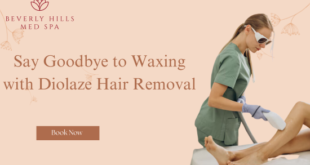In Islamabad, as in many parts of South Asia, the pursuit of a lighter skin tone is often seen as synonymous with beauty and social status. This trend, deeply rooted in cultural perceptions and societal norms, has led to a booming market for skin whitening products and treatments. In this blog, we will delve into the cultural influences behind this trend, the various methods used for skin whitening, the health implications, and the growing movement towards embracing natural beauty.
Cultural Influences on Beauty Standards
The preference for fair skin in Pakistan can be traced back to historical contexts and societal influences. The association between lighter skin and beauty is often perpetuated by media, advertising, and even folklore. In many traditional narratives, fair skin is linked to purity, desirability, and privilege. This has created a pervasive belief that fairer individuals have better marriage prospects and professional opportunities.
Media representations also play a significant role. Television dramas, films, and advertisements often feature fair-skinned actors and models, further reinforcing the idea that beauty is tied to skin tone. This portrayal can deeply influence individual self-esteem and body image, leading many to pursue skin whitening solutions.
Popular Skin Whitening Methods
In Islamabad, a variety of skin whitening products and treatments are readily available, catering to those seeking a lighter complexion. Here’s a closer look at the most common methods:
1. Topical Creams and Lotions
Many individuals turn to over-the-counter creams and lotions that claim to lighten skin. These products often contain active ingredients such as hydroquinone, kojic acid, and alpha-arbutin. While some users report improvements in their skin tone, these products can also pose risks. Prolonged use of hydroquinone, for instance, has been associated with skin irritation, discoloration, and even a condition called exogenous ochronosis, where the skin darkens due to the buildup of the substance.
2. Natural Remedies
For those seeking safer alternatives, natural remedies have gained popularity. Ingredients like lemon juice, turmeric, and yogurt are often used in homemade masks and scrubs. While these remedies can be gentler on the skin, they typically require consistent application over time to yield visible results. Additionally, natural does not always mean safe; some individuals may experience allergies or irritation from these ingredients.
3. Chemical Peels and Laser Treatments
For more immediate results, some opt for professional treatments such as chemical peels and laser therapy. Chemical peels involve applying a solution to the skin to remove dead skin cells and promote new skin growth, while laser treatments target pigmentation and melanin production. Although these methods can be effective, they can also be costly and require careful aftercare to avoid complications.
4. Oral Supplements
The market for oral supplements that claim to promote skin whitening has also expanded. These products often contain antioxidants and vitamins purported to lighten skin from within. However, the efficacy and safety of these supplements are often not well-regulate, making it essential for consumers to approach them with caution and seek professional advice.
Health Implications
While the desire for lighter skin is prevalent, it is crucial to consider the health implications associated with various whitening methods. Many commercial products contain harmful chemicals that can lead to skin damage and other health issues. In particular, the use of unregulated or counterfeit products poses significant risks, as these may contain harmful substances not listed on the label.
Moreover, the obsession with skin whitening can negatively impact mental health, leading to body image issues and low self-esteem. It’s important for individuals, especially young women, to understand that beauty comes in all shades and that self-worth should not be tied to skin color.
The Movement Towards Acceptance
In recent years, there has been a growing movement in Pakistan to challenge traditional beauty norms and promote the acceptance of diverse skin tones. Influencers, activists, and social media campaigns are advocating for self-love and celebrating natural beauty. This shift is vital in fostering a healthier attitude towards self-image and beauty standards.
Campaigns that promote body positivity and diversity aim to empower individuals to embrace their unique features. By shifting the narrative around beauty, society can reduce the stigma associated with darker skin tones and encourage a culture of acceptance.
The Role of Education and Awareness
Education and awareness are critical in addressing the skin whitening trend. Public health campaigns should focus on the importance of safe skincare practices and the potential risks associated with certain products. Health professionals and beauty experts can play a pivotal role in guiding consumers toward safer alternatives and promoting the significance of sun protection.
Furthermore, schools and community organizations can contribute by fostering discussions about beauty standards, self-esteem, and the importance of embracing one’s natural appearance. By encouraging open dialogue, society can move toward a more inclusive understanding of beauty.
Conclusion
The trend of skin whitening in Islamabad reflects a complex interplay of cultural perceptions, societal pressures, and individual desires. While many seek lighter skin through various products and treatments, it is essential to prioritize health and well-being over conforming to narrow beauty standards. By promoting awareness, acceptance, and appreciation for all skin tones, society can pave the way for a more inclusive and positive perception of beauty. Ultimately, embracing diversity and celebrating individuality is key to fostering a healthier outlook on beauty for current and future generations.
 Our Gateway to Insightful Blogging Exploring Ideas, Sharing Knowledge, Inspiring Minds
Our Gateway to Insightful Blogging Exploring Ideas, Sharing Knowledge, Inspiring Minds



